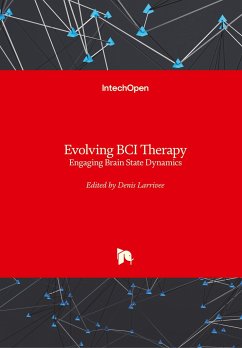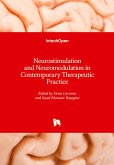As a strategic response to cognitive and CNS impairments, BCI is a theoretical outgrowth of several generations of endogenous devices for peripheral nerves, which have as a prime goal the direct replacement of lost neural function. In these earlier applications therapeutic intervention has been premised only on the restoration of signal generating capacity where nerve transmission is largely unidirectional and temporally sequenced. It is increasingly apparent, however, that the brain not only employs a very different type of syntax from that of peripheral nerves but also structures the semantic content of motor activity, fundamentally altering the conception of BCI as a therapeutic medium. The book presented here documents this change, proposing a multi-faceted strategy in which BCI therapy can restore the loss of multi-tiered, brain based motor function.
Hinweis: Dieser Artikel kann nur an eine deutsche Lieferadresse ausgeliefert werden.
Hinweis: Dieser Artikel kann nur an eine deutsche Lieferadresse ausgeliefert werden.








